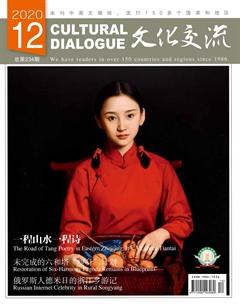是书家更是学者
刘杨

2020年是沙孟海诞辰120周年。为了纪念沙孟海为中国书法事业作出的卓越贡献,研究其学术理念和方法,弘扬其艺术精神,追寻一代艺术巨匠和高等书法教育先驱的风范,“碧血丹心——纪念沙孟海诞辰120周年系列活动”于2020年11月底举行。
一
纪念活动分为三个板块:沙孟海书法篆刻艺术大展暨学术文献展;传承、跨越与典范:纪念沙孟海诞辰120周年座谈会;全国“书法学”学科建设与发展学术研讨会。其中,沙孟海书法篆刻艺术大展暨学术文献展于11月28日在北京中国美术馆开展。
这次展出,反复甄选了沙孟海先生各个时期最具代表性之書法、篆刻作品以及文献、遗物300余件(组),其中不乏首次面世的珍贵手稿。
展览分“翰墨千秋”“金石永寿”“积健为雄”“百年树人”四个板块,彰显先生穷源竟流、精益求精的治学态度,临池不辍、厚积薄发的艺术精神,投身文博、书法教育事业的满腔热情,及其对中华民族文化自强的坚定信念,全方位地展示沙孟海先生作为文人学者的崇高理想、作为艺术家的卓越成就、作为教育家的时代担当。
二
沙孟海(1900~1992年),原名文若,字孟海,号石荒、沙村、决明。出生于浙江鄞县(今浙江省宁波市鄞州区),曾任浙江大学中文系教授、浙江美术学院(现中国美术学院)终身教授、西泠印社社长、西泠书画院院长、浙江省博物馆名誉馆长、中国书法家协会副主席等职。
沙孟海先生是中国高等书法教育的先驱。20世纪60年代初,沙孟海应潘天寿之邀,与陆维钊等诸位先生在浙江美术学院(现中国美术学院)筹办并成立了全国首个书法专业。此举开创了书法的高等教育之路,于现代学院体系中重新建立起了道艺会通、学养相成的书法教育“通人之学”。
中国美术学院的书法教育,自1963年至今,不仅代表着中国高等书法教育的发展历程、发展方向,亦勾勒出学科建设、教学设置、人才培养的基本框架与前景规划,开辟了中国高等书法教育和当代书法发展的崭新格局。直至今日,全国已有200余所高校开设有书法专业。
回溯这超过半个世纪的漫漫长路,“敢为天下先”的开拓精神和“含弘光大”的责任担当,始终贯穿在书法专业各时期的发展之中,体现在一代代师生教学的点滴之间,是高等书法教育得以不断发展和完善的不竭动力与源泉。
而高等书法教育之开创,不仅依靠着前辈们的责任感与使命感,更离不开他们严谨的治学态度与卓绝的学术眼光——沙孟海先生认为:“作为一个书法家,一方面要了解文字的结构和书体源流,借鉴名迹,熔铸古今,推陈出新,自成风貌。另一方面还得转益多师,要有字外功夫,诸如文学、文字学、史学、哲学等学问修养,更要有崇高的人格修养。”
虽然当时书法专业尚处草创期,书法学科远未成型,但他们高瞻远瞩,对整个书法学科与教育的发展,以及相关问题都有着超越时代的远见卓识。
三
沙孟海先生被称为“20世纪书坛泰斗”,在书法篆刻艺术上取得了极为辉煌的成就。于书,则化古融今,自成一格,尤其是擘窠大字,有“海内榜书第一”之誉;于印,则清逸醇正,入古出新,所作古玺、汉印到明清流派,甚至隶楷入印,皆能信手拈来,又极富书卷之气。
沙孟海更是学者,其一生潜心治学、成果颇丰,于金石学、文字学、古器物学、语言学、考古学、博物馆学诸领域均深有研究;沙孟海在同代学人中,较早地引入近代考古学视野,对传统金石学进行反思,批评没有宏观视野与系统框架的文献搜辑与材料罗织;与罗振玉一样,他也主张改金石学为古器物学。沙先生早期的考碑之作以及诸多文献考证,可谓将书法与考古融为一体之实践,文献爬梳之外,自有其史学之目的与见解。他在史学方面的构建与疏通工作,乃书法之学会通经史、连接古今的一个重要象征。
Toward the end of November, a series of events was launched in commemoration of 120th anniversary of Sha Menghai (1900-1992), an accomplished calligrapher and scholar based in Hangzhou. The events were in three parts. The first was a large-scale exhibition of Shas calligraphy and seal engraving and documents about his artistic brilliance at the National Art Museum of China in Beijing. The exhibition went from November 28 to December 6 showing over 300 exhibits from various heavyweight art and education institutions of Zhejiang. After the opening ceremony of the exhibition, a memorial meeting was held in commemoration of the great calligrapher. Attendees at the seminar reminisced about Shas life and achievement.
The second event was an academic seminar in commemoration of the calligrapher. The third event was an academic seminar about issues in college-level calligraphy education in
Sha Menghai, a native of Yinxian County in eastern Zhejiang, is a key chapter in the 20th-century history of calligraphy in China. He worked as a professor of the Chinese Department of Zhejiang University and tenured professor of Zhejiang Academy of Fine Arts, the predecessor of present-day China Academy of Art; he was president of Xiling Seal Art Society and president of Xinling Academy of Calligraphy and Art, honorary curator of Zhejiang Museum, and vice president of China Calligraphers Association.
Sha was a pioneer in calligraphy education at college level across the nation. In 1963, Sha Menghai and Lu Weizhao set up the calligraphy major at Zhejiang Academy of Fine Arts. It was the first of its kind in China. Thanks to Sha and Lu, calligraphy is now a very successful and mature major at over 200 higher education institutions of China, carrying on the art of traditional calligraphy, which was almost as old as the Chinese civilization, to the future
Sha was engaged to be one of the two founders of the calligraphy studies at the academy for good reasons. An innovative calligrapher of the 20th century, he was a prominent scholar of various fields of calligraphy and was the number one calligrapher who wrote huge-size Chinese characters unlike anyone else of his time. In particular, he was accomplished in the fields of ancient inscriptions on metal and stone, Chinese philology and linguistics, archaeology and museology. He wrote and published a series of books on calligraphy.
Sha contributed a great deal to calligraphy education at college level. He took it as a mission to carry on calligraphy as a tradition.
“As a calligrapher, one needs to understand philology and linguistics, and understand where all the changes in calligraphy came from. In calligraphy education, the past and the present and the future need to be one. Whats new must come from whats old. Calligraphers get to establish their own styles and break away from stereotypes. On the other hand, one needs to study literature, literary style, history, philosophy in order to be a good calligrapher and a good person,” remarked the master about his insight and foresight into calligraphy.
A founder of the calligraphy studies at Zhejiang Academy of Fine Arts, Sha brought his vision to the education course in 1963. His vision still serves as a guideline for college-level calligraphy studies in China.
——纪念沙孟海诞辰120周年书法篆刻艺术展暨文献展

